Canadian Accessibility Laws
Explore accessibility laws in Canada,
and learn how they apply to closed captioning and online video content.
The Accessible Canada Act Provincial Accessibility Laws CRTC Caption Laws Resources
Get an overview of Canada’s past, present, and future leadership in digital accessibility with David Berman:
The Accessible Canada Act
The Accessible Canada Act (ACA)
Read the blog: A Quick Guide to the Accessible Canada Act
In 2018, Canada introduced the Accessible Canada Act (ACA), an accessibility law that aims to make the country barrier-free by 2040. The ACA enforces accessibility standards starting in priority areas, including employment, built environment, information and communication technologies, procurement of goods and services, delivery of goods and services, and transportation. The ACA aims to prevent barriers to federal jurisdiction across Canada and establishes a framework for developing, implementing, and enforcing accessibility standards starting in seven priority areas. Those priority areas include:
- Employment
- The built environment
- Information and communication technologies (ICT)
- Communication other than ICT
- The design and delivery of programs and services
- The procurement of goods, services, and facilities
- Transportation

Get started with accessible and compliant captions, audio description, and more:
Provincial Accessibility Laws
Accessibility for Ontarians with Disabilities Act (AODA)
Discover How the AODA Impacts Web and Online Video
The AODA is the most progressive accessibility law in the world and sets accessibility requirements for organizations in Ontario, Canada with the aim of creating a universally accessible province by 2025.
The AODA regulates accessibility standards across government, public, and private sectors, with requirements affecting five different areas of business: customer service, employment, information and communications, transportation, and design of public spaces. The AODA categorizes businesses by size and ownership (public or private), with slightly different rules for each.
Under the AODA, all large private and non-profit organizations with 50 or more employees and all public sector organizations are required to make their websites accessible. The AODA mandates that web content and online video must conform to the Web Content Accessibility Guidelines (WCAG) 2.0 AA success criteria with two exceptions: criteria 1.2.4 (live captions) and criteria 1.2.5 (audio descriptions).

The Accessible British Columbia Act
Read the blog: The Accessible British Columbia Act
The Accessible British Columbia Act became law in June 2021. The Government of British Columbia (B.C.) passed this legislation to prove its commitment to creating an accessible province for people with disabilities. B.C. has declared its goal of becoming the most accessible province by 2024.
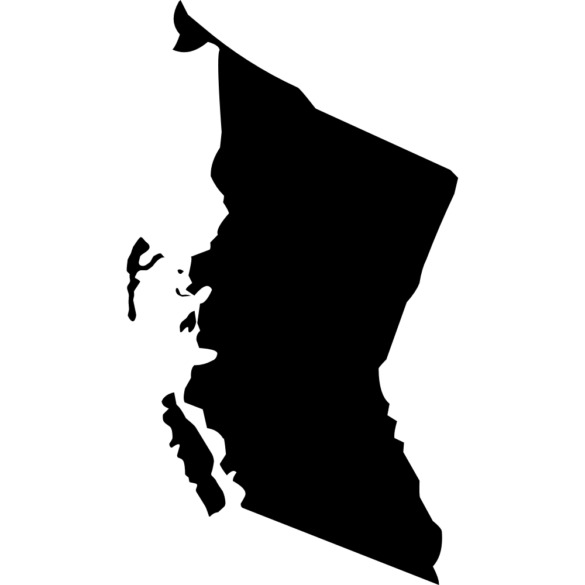
Accessibility for Manitobans Act
Read the blog: Understanding the Accessibility for Manitobans Act
The Accessibility for Manitobans Act (AMA) is landmark legislation that provides a process for identifying, removing, and preventing barriers to accessibility across the province. Introduced in 2013, the AMA represents a commitment from the Manitoba government to achieve significant accessibility progress within a decade.
To do this, the AMA delineates accessibility standards that affect the daily lives of all Manitobans, not only those with disabilities. These standards are intended to serve as “building blocks for making real, measurable, and effective changes to accessibility.”

The Newfoundland and Labrador Accessibility Act
The Newfoundland and Labrador Accessibility Act was introduced in the House of Assembly in October 2021 and became law on December 3, 2021. The Accessibility Act aims to improve accessibility by identifying, preventing, and removing barriers that prevent persons with disabilities from full participation in society.
Under the Accessibility Act, public entities are required to develop an Accessibility Plan. The Act also outlines what the Accessibility Plan should include, the measures to take to remove barriers, and the procedures to assess whether the measures are working. The Accessibility Act emphasizes engagement with persons with disabilities and disability groups as an important part of the plan’s development.

Nova Scotia's Accessibility Act
Read the blog: Nova Scotia’s Accessibility Act
Nova Scotia’s Accessibility Act, also known as Bill 59, was passed in April 2017 to aid Nova Scotia in achieving an accessible province by 2030. The Accessibility Act is an exciting and necessary step for the province, as 30.4% of Nova Scotians have a disability, the highest of any province in Canada.

The Accessible Saskatchewan Act
A bill for The Accessible Saskatchewan Act was introduced in the Legislature in the fall of 2022, received Royal Assent on May 17, 2023, and came into force on December 3, 2023. The Accessible Saskatchewan Act aims to improve accessibility by preventing and removing barriers in employment, the built environment, information and communications, transportation, service animals, procurement, service delivery, and any other prescribed activities or undertakings.
Additionally, the Act establishes the Saskatchewan Accessibility Office, a team responsible for supporting the administration of the Act and the regulations.

Canadian Radio-television and Telecommunications Commission (CRTC) Captioning Laws
CRTC Caption Laws
Read the blog: Canadian CRTC Caption Laws
In 2007, Canada’s broadcast industry established two working groups under the direction of the CRTC. The goal of these working groups was to develop closed captioning standards that would ensure consistent and reliable quality throughout the Canadian broadcasting system. The CRTC formed several policies based on these groups that would address captioning quality and quantity, as well as a system to monitor captioning and a way for the public to file complaints.
The CRTC requires most broadcasters to caption 100% of their programs during a broadcast day, which is defined as the hours between 6 a.m. and midnight. They must additionally ensure that 100% of advertising, sponsorship messages, and promotional content is captioned. Finally, they must provide viewers with closed captioning—if captions are available—for all programming aired overnight (midnight to 6 a.m.). To establish quality standards and measure accuracy, the CRTC refers to the Canadian NER model.

Learn what can go wrong when we design for people instead of with people on Allied Podcast, featuring David Berman:
Key Resources for Navigating Canadian Accessibility Laws
Compliance with accessibility laws means staying up-to-date with the latest legal developments. 3Play Media Canada is committed to empowering you with free resources during your accessibility journey so that you can make informed decisions.
Blogs

AODA Video Requirements & Canadian Accessibility Standards
Discover web accessibility standards and video requirements under the Accessibility for Ontarians with Disabilities Act (AODA).

A Quick Guide to the Accessible Canada Act
In 2018, Canada introduced the Accessible Canada Act (ACA), an accessibility law that aims to make the country barrier-free by 2040. This article will bring you up to date with the most recent ACA developments.
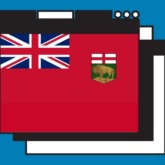
Understanding the Accessibility for Manitobans Act
The Accessibility for Manitobans Act (AMA) became law in December 2013, and makes up just one facet of Canada’s provincial accessibility standards. In this blog, we’ll break down the Accessibility for Manitobans Act – including who it applies to, what it requires, and on what timeline organizations must become compliant.

Canadian CRTC Caption Laws
Certain provinces boast some of the most progressive accessibility laws in Canada, but the Canadian d/Deaf and hard of hearing population has been advocating for more advanced closed captioning standards across the nation since the 1960s. Learn about the Canadian Radio-television and Telecommunications Commission (CRTC)’s work to give Canadians a chance to voice their opinions and make positive changes for accessibility in the broadcast TV space.
eBooks
Back to Top
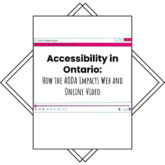
Accessibility in Ontario: How the AODA Impacts Web and Online Video
This 12-page brief focuses on the AODA standards and requirements that relate to online video and web content. It provides deadlines for different types of organizations, compliance strategies, and best practices for making online video accessible.
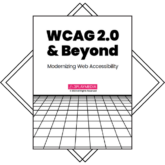
WCAG 2.0 and Beyond: Modernizing Web Accessibility
WCAG requirements can be intimidating to wade through for novices and experts alike. In this eBook, we aim to help clarify WCAG’s compliance needs and measurements for success. Learn what WCAG is, how versions 2.0 & 2.1 work, key laws referencing WCAG across the world, and more.
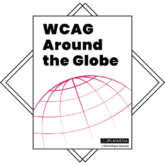
WCAG Around the Globe
Around the world, a number of countries have adopted some form of WCAG in their respective accessibility laws. In this guide, we’ll take a look at how WCAG is being implemented worldwide, and which legislation or documentation references it.

WCAG 2.0 & 2.1 Compliance Checklist
As you incorporate WCAG 2.0 and/or 2.1 guidelines into your website’s design, use this checklist to ensure you’ve accounted for all of the necessary success criteria.
Other Trusted Accessibility Resources
Back to Top

David Berman
David Berman has over 30 years of experience in inclusive design: he strongly believes we can include everyone, without tradeoffs. As author (Do Good Design [Pearson, 2013]), expert speaker, and strategist, his work has brought him to over 50 countries. David is a high-level advisor to the United Nations on accessible Web design thinking. He’s also an International Advisor at G3ICT, advising governments on inclusive design policy, and chair of the Carleton Access Network at Carleton University. He serves on the ISO committee for accessible PDF. Clients include BMO, IBM, the International Space Station, and the Canadian Human Rights Commission. Visit David’s website to learn more.

World Wide Web Consortium (W3C)
Web Content Accessibility Guidelines, or WCAG, is a set of guidelines for making digital content accessible for all users, including those with disabilities. WCAG was developed by the World Wide Web Consortium (W3C) nearly 30 years ago. Read the official Web Accessibility Content Guidelines on W3C’s website.

Accessibility Standards Canada
Accessibility Standards Canada is responsible for developing accessibility standards to be integrated into federal regulations. The group has been actively creating accessibility standards for federally regulated entities and organizations in Canada since the passing of the ACA in 2019.

Office of the Chief Accessibility Officer
The Office of the Chief Accessibility Officer (OCAO) works to support the efforts of the CAO to monitor and report on accessibility outcomes. This includes serving as a trusted source of information and actively engaging with numerous partners and the public. The OCAO is committed to challenging assumptions and promoting a productive dialogue around accessibility.
You’ve read the laws. Now let’s talk about your video accessibility needs:

